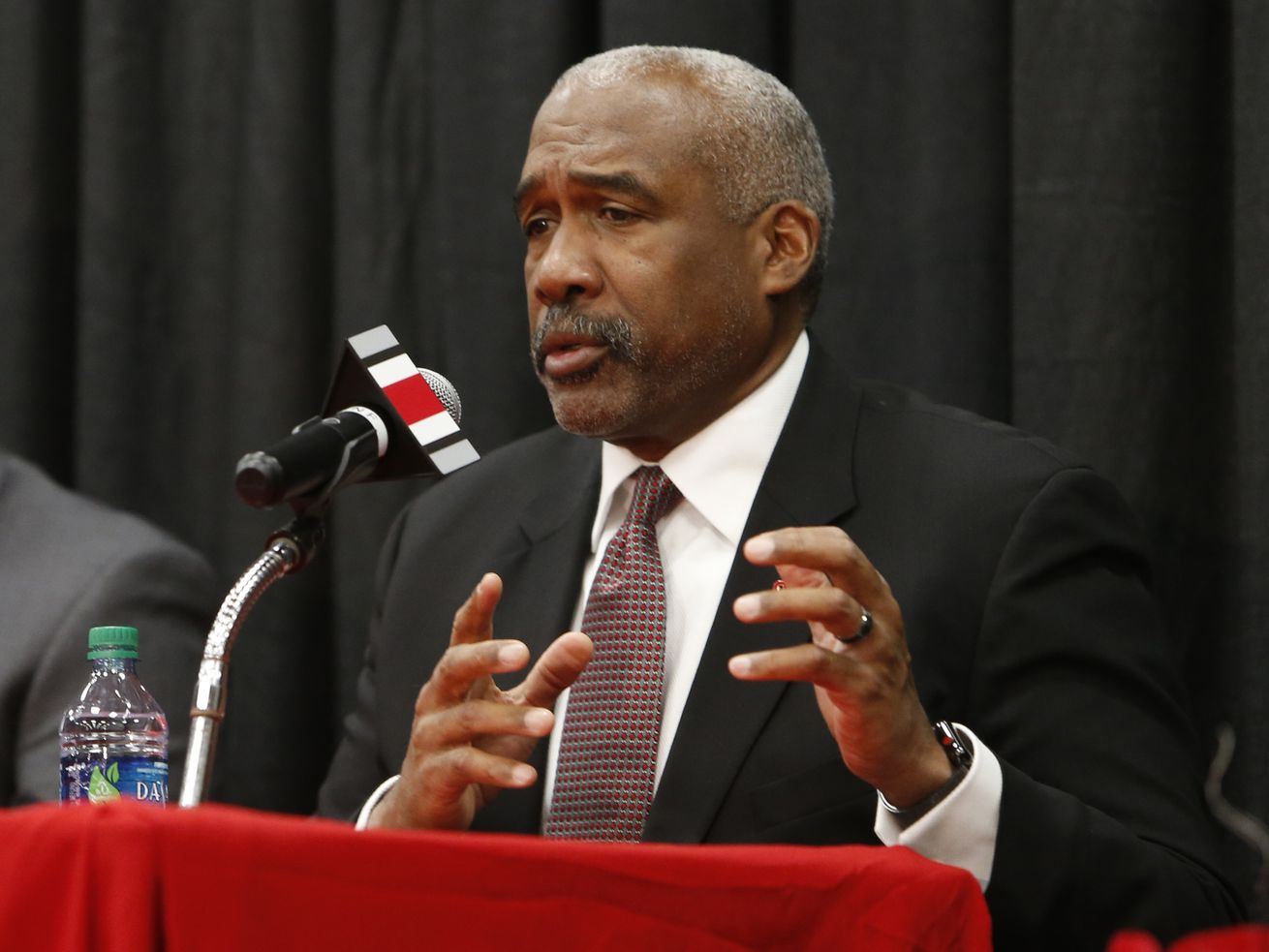Cops who kill often catch break at sentencing timeAssociated Presson May 27, 2021 at 4:37 pm

As former Minneapolis Police Officer Derek Chauvin waits to be sentenced for killing George Floyd, it’s worth remembering what happened in Chicago after a jury convicted a white police officer in the shooting death of 17-year-old Laquan McDonald.
CHICAGO — Throughout the murder trial, prosecutors showed jurors the video seen countless times around the world of the white police officer killing a Black male. And when it was over, the jurors found the officer guilty of murder.
That was in 2018. Now, as former Minneapolis Police Officer Derek Chauvin waits to be sentenced for killing George Floyd, it’s worth remembering what happened in Chicago after a jury convicted a white police officer in the shooting death of 17-year-old Laquan McDonald: The judge didn’t follow prosecutors’ recommended 18-20 years behind bars. Former officer Jason Van Dyke got a more lenient sentence — and might be released from prison in about three years.
It’s possible things have changed. Floyd’s horrific death touched off mass protests and calls for police reform that have rippled across the U.S. and in Congress. Chauvin could end up the exception, with a sentence of 30 years behind bars, particularly after the judge who will sentence him agreed Chauvin had committed particular cruelty in Floyd’s death. But if history is any indication, a slam-dunk sentence is not guaranteed.
That was filmmaker Spike Lee’s point when, shortly after the verdict, he said on CNN that he started worrying as soon as “I heard the judge would be the one (who) would be the one that handed out the sentence.” The jury, he said, “got it right, but we don’t know what this judge (will decide).”
Much has been written about how rare it is for a police officer to be charged for an on-duty killing. Philip Stinson, a Bowling Green University criminal justice professor who tracks police prosecutions, has found that since 2005, just 142 non-federal police officers have been charged with murder or manslaughter for on-duty shootings.
Chauvin is part of an even smaller roster of officers who have actually been convicted in on-duty killings: According to Stinson’s count, Chauvin is just the eighth officer convicted of murder for an on-duty killing.
The officers convicted of murder for on-duty shootings were sentenced to an average of 16.4 years in prison, Stinson found. In comparison, the average sentence for a murder conviction in the United States was, just over 48.8 years as of 2018, according to a report released this year by the U.S. Department of Justice’s Bureau of Justice Statistics.
The average time they spend behind bars can be considerably less than that. Depending on the state, convicted felons can have as much as half their sentence lopped off if they behave themselves in prison. In Minnesota, the presumption is that defendants with good behavior will serve two-thirds of their sentences before they are released on parole.
What that means, according to the Bureau of Justice Statistics, is that the people who received decades-long sentences for murder or non-negligent manslaughter actually served an average of 17.8 years in state prison before they were released.
For police officers, it often translates to less than a decade behind bars. In Texas, for example, when a former Balch Springs police officer convicted of murder in the shooting death of an unarmed Black teenager was sentenced in 2018 to 15 years in prison, he knew he’d be eligible for parole after serving 7.5 years.
That helps explain why in Illinois, Van Dyke’s attorney sounded more like he’d won the case than lost it when the judge handed down what amounts to a three-year sentence.
“He truly felt great. I mean, he was not just relieved, he was happy …” attorney Dan Herbert told reporters.
Under Minnesota’s sentencing guidelines, Chauvin will only be sentenced for the most serious charge — second-degree murder — in Floyd’s 2020 death. That meant that at the time Chauvin was convicted he faced a presumptive sentence of 12 1/2 years in prison, with the judge limited to sentencing him between 10 years and eight months to 15 years.
But in May, Judge Peter Cahill ruled that there Chauvin abused his authority as a police officer when he restrained Floyd in 2020 and that he treated Floyd with particular cruelty — aggravating factors that add much more more prison time.
The reasons why police officers seem to catch such a break at sentencing begin with one of the first things a prosecutor typically points to when asking for a stiff prison sentence: the defendant’s criminal history.
That, however, runs up against the reality that police officers rarely have any criminal history, for the simple reason that felony convictions get officers fired or prevent them from getting hired in the first place.
“Sentences can go way up if someone has a felony record,” said Robert Weisberg, a law professor at Stanford University and co-director of the Stanford Criminal Justice Center. “Chauvin doesn’t have that.”
And there’s another argument: “Officers who otherwise have lived a lawful life can make a really strong argument that a long prison sentence isn’t necessary to protect the public, that he … won’t be a threat to public safety,” said Joseph McMahon, the special prosecutor who successfully prosecuted Van Dyke.
Chauvin, his attorneys can argue, won’t commit a similar crime because he’s no longer a police officer.
That’s what a California judge said when he didn’t follow a prosecutor’s request to sentence a former police officer convicted of involuntary manslaughter in a 2015 fatal shooting to four years in prison in favor of 180 days in jail and three years’ probation.
“He has absolutely no prior criminal record, the crime was committed because of very unusual, somewhat bizarre circumstances, which is very unlikely — in fact — will never occur again,” Butte County Judge James F. Reilley said of former Paradise Police officer Patrick Feaster.
That doesn’t mean prosecutors are defenseless, though.
During Van Dyke’s sentencing hearing, McMahon made sure the judge knew about his past, even if that past did not include any convictions.
“I went through all the prior complaints against Jason Van Dyke and even though every one of was (determined to be) unfounded by Chicago Police, I found those individuals all across the country and had them testify about their experiences.”
People like a Black man named Edward Nance. During Van Dyke’s sentencing hearing, Nance tearfully recounted the day Van Dyke pulled him from his car, handcuffed him behind his back and dragged him to his squad car violently enough to rip rotator cuffs. Nance spoke of his constant physical pain, multiple surgeries, and anxiety and depression that more than a decade later made it impossible to sleep through the night.
That is the “kind of witness” available to Minnesota prosecutors if they wish, said McMahon.
___
Associated Press researcher Rhonda Shafner in New York contributed to this report.






/cdn.vox-cdn.com/uploads/chorus_asset/file/22539560/Ariel_Dance_Chicago_Photoby__Philamonjaro.jpeg)

